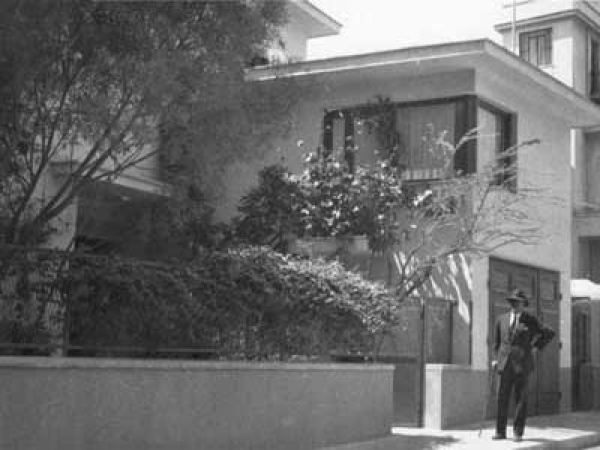ARCHITECT'S LIST
DRAGOUMIS A. (1891-1977)


Profile
The Dragoumis family played an important part in the struggle for the freedom of Macedonia (in the early twentieth century). Dragoumis joined the Military Academy, graduating in 1912 as Sublieutenant in the Artillery. Following the family tradition he took part in the two Balkan wars. In 1920, while on a secret mission to Constantinople, he was shot in the head. Following this incident, he resigned from the army due to health reasons in 1922 and left for Germany, where he studied architecture at the Polytechnic School of Braunschweig (Technische Hochschule), graduating in 1925.
From 1925 to 1928 he resided in Thessaloniki, where he worked as freelance architect. Returning to Athens, he continued his building activity. In 1931 he started the construction of his own house, on Lycavittou Square in Kolonaki, a central area of Athens.
Between 1932 and 1940, he was president of the architect's section of the Technical Chamber of Greece, and in 1933 he participated in the International Congress for Contemporary Architecture, the IV CIAM, when he addressed his colleagues on the second day of the congress (2 August, 1933). Later he was appointed Head of the Urban Design Department of the Ministry for the Administration of the Capital. From 1939 onwards he worked for the Athens-Piraeus Railway company. He died in Athens in 1977.
While in Germany, he came into contact with the new trend in architecture, the Bauhaus, the modern movement. Only a few years later, in 1931, he designed his own residence.
It was an elegant three-storey building. It had two storeys on the side of Lycavittos Square (Anagnostopoulou Street) and three from the opposite side, that of the garden where the slope of the land turned the basement into the ground floor. The plasticity of the austere orthogonal volumes, the clarity of the forms, the interplay between full and void, the corner openings, the small elegant staircase on the back elevation, which led from the ground floor appearing as a projection in the garden, and the stair-like arrangement of the garden, were studied with great care and attention by the architect himself. The same applied for the interior arrangement of the house, destined to be home to a typical bourgeois Athens family with four children. The rooms were spacious and functional, but unpretentious. The dining room corner was particularly pleasant, where under the large corner window on the south side, the big Macedonian style sofa would invite you to lie down and stare at the glorious view of the Acropolis. This particular corner was one of the elements of the house which convince you that Dragoumis' words "the civilisation of a place, of every race according to its soul, its habits and needs in climate" can take shape and form in the real world. Dragoumis' residence featured at the time in Greek and foreign magazines. It was the pride and joy of the architect himself, his family, and his friends.
Unfortunately, life has its own demands, and preserving a small house with a garden in the heart of Athens in our days seems utopian. In 1962 the house was demolished. In its place a modern apartment building was erected, also designed by Dragoumis. In this building was the apartment where Dragoumis spent the rest of his days, although he never liked the change.
List of main works and projects
Part of the University of Salonika (GR)
Military Hospital in Salonika (GR)
Railway Station in Corinthos (GR)
Railway Station in Patras (GR)
General Storehouses of Greece (GR)
Greek Red Cross Storehouses in Zante (GR)
Greek Red Cross Storehouses in Cephalonia (GR)
General Hospital in Argostoli, Cephalonia (GR)
Student Boarding House in Zante (GR)
Student Boarding House in Cephalonia (GR)
Maro Kardamitsi-Adami
Photo: Dragoumis in front of his garage.
© Neohellenic Architecture Archives of the Benaki Museum
more info and photos >>>






